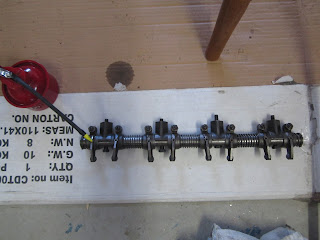 |
| Before soda blasting |
 |
| After soda blasting |
Soda blasting is better for your car than sand blasting because the soda doesn't damage the underlying metal. The only problem is that the soda doesn't remove all rust. So after the blasting it was time for some more grinding and a chemical treatment. The normal surface rust is easy to remove with the grinder but the hood, roof and boot where "pitted".
I used phosphoric acid and Rustico to get rid of the rust pits. Not all the rust in the pits was removed by the chemicals but it went soft after the treatment and was easy to remove with the grinder without taking of too much off the healty metal.
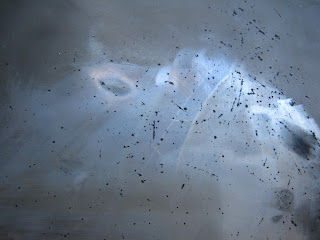 |
| Pitted surface of the roof |
 |
| Boot - Left side done |
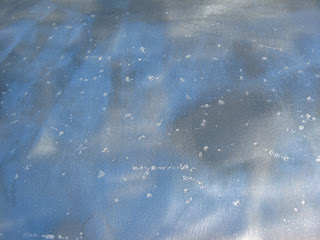 |
| Almost done |
Soda residue will give problems if you don't clean the metal before painting. However if you want to wait a couple of months before painting it's also a perfect rust inhibitor.
After removing the surface rust I started to get rid of all the soda dust in the car, especially inside the chassis.
And it took alot of time...hours became days....So don't expect to get rid of the hard labour with soda blasting. There's no easy way out :-s
I used compressed air and a vacuum cleaner with a high tec (masking tape ;) attached flexible hose. With the amount of baking soda that came out of the Volvo you could easily bake cakes for the whole neighbourhood..
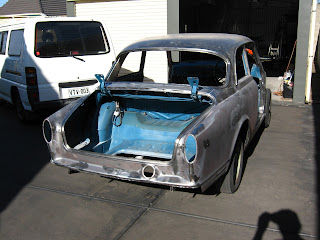 |
| Cleaning the 122S |
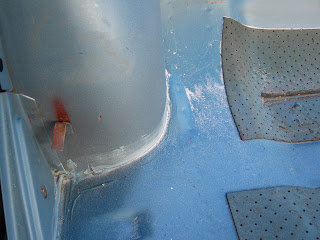 |
| Baking soda everywere |
 |
| Vacuum cleaner with hose extension to clean the chassis |
After cleaning it's best to hit the bare metal with an epoxy primer within 1/2 an hour, otherwise you'll get flash rust again. I didn't because I was still looking for the best epoxy primer. So there will be a little, almost invisible, flash rust on the doors. Luckely it's been very hot (35-40 C) and dry the last couple of days.
Sanding with 120 grit before priming will be neccessary, but it won't take too long.
Sanding with 120 grit before priming will be neccessary, but it won't take too long.






